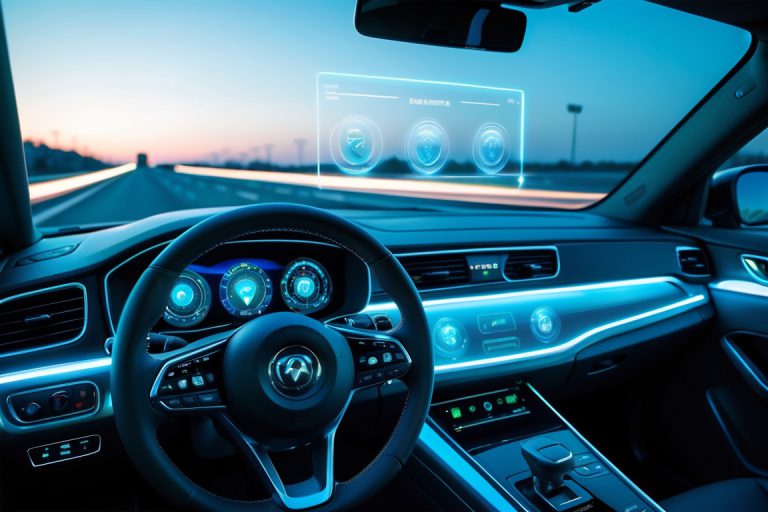In a world increasingly driven by digital innovation, it’s no surprise that even the way we drive is being transformed. But it’s not just about electric vehicles or self-driving cars anymore. A quiet revolution is taking place behind the wheel—one that uses gamification to improve how we drive every day.
From scoring points for smooth braking to earning badges for fuel efficiency, driving apps are turning ordinary commutes into interactive, goal-driven experiences. It’s fun, it’s motivational, and, perhaps most importantly, it’s making roads safer. But how does this concept actually work, and why is it so effective? Let’s break down how gamification is reshaping the driving experience—and how you can benefit from it.
What is Gamification?
Gamification is the application of game elements—like points, levels, leaderboards, and challenges—to non-game contexts. In driving, it means transforming your daily trips into something more like a game. You might be competing against your past performance, racing friends for the best fuel economy, or collecting rewards for good behavior behind the wheel.
It’s not just about fun. Gamification taps into basic psychological drivers like competition, achievement, and progress. When applied correctly, it can lead to real-world changes in behavior—like driving slower, braking more gently, or planning more efficient routes.
How Driving Apps Use Gamification
A number of apps are now leading the charge, using smart algorithms and sensors to track driving behavior and deliver instant feedback. Here are some common features:
1. Driving Scores
Apps like DriveSmart, OnMyWay, Flo, and SmartDrive give you a score based on various driving metrics—acceleration, braking, turning, speed, and distraction levels (like phone usage). The higher the score, the better your driving performance.
2. Badges and Achievements
Much like a fitness tracker might reward you for hitting 10,000 steps, many driving apps award digital badges for milestones—completing 10 safe trips in a row, driving without touching your phone for a week, or reducing harsh braking by 50%.
3. Leaderboards and Social Challenges
Friendly competition adds a social element. Some apps let you compare scores with friends or family, encouraging safer habits through peer motivation. Others run city-wide contests or company-wide programs to encourage better behavior among employees or fleet drivers.
4. Rewards and Incentives
Gamified apps often include real-world rewards. You might earn cashback, gift cards, insurance discounts, or charity donations in exchange for safe driving. These incentives provide a powerful reason to change habits.
Benefits of Gamification for Drivers
Improved Safety
Studies have shown that real-time feedback on driving behavior—especially when combined with goals and incentives—can significantly reduce risky behavior. Gamified systems help drivers become more aware of how they’re driving and motivate them to avoid speeding, tailgating, or distracted driving.
Better Fuel Economy
By encouraging smoother acceleration and braking, apps help drivers reduce fuel consumption. Some apps even calculate how much money you’ve saved by driving more efficiently.
Lower Insurance Costs
Many insurers now use app-based telematics to offer usage-based insurance (UBI). If you score well, you may qualify for discounted rates—sometimes saving hundreds per year.
More Engaged Drivers
Gamification makes driving more interesting, especially for people who commute regularly. Instead of zoning out or becoming frustrated in traffic, drivers stay engaged by trying to improve their score or unlock a new achievement.
Challenges and Considerations
While gamification offers clear benefits, it’s not without its challenges. Some drivers may become too focused on the app or take risks to improve their score. Others might find the constant feedback overwhelming or distracting.
To be effective, these apps must prioritize user safety and simplicity. Notifications should be limited while the vehicle is in motion, and performance summaries should be delivered after the trip is over. The goal is to enhance awareness—not to cause more distractions.
There’s also the question of data privacy. Driving behavior data is highly personal, and users should understand who has access to their information and how it’s used. Most reputable apps are transparent about their data policies, but it’s always worth reading the fine print.
How to Get Started
If you’re curious about gamifying your driving experience, here’s how to start:
- Choose an App – Look for apps with strong reviews, user-friendly interfaces, and solid privacy policies. Some insurance companies have their own apps you can try.
- Set Personal Goals – Whether it’s reducing harsh stops or staying off your phone, define a few behaviors you’d like to improve.
- Track Your Progress – Most apps give you weekly reports and detailed breakdowns to help you improve.
- Challenge Friends or Family – A bit of friendly competition can go a long way in building new habits.
Final Thoughts
Gamification isn’t just a gimmick—it’s a powerful tool for building better habits. As cars become smarter and more connected, the future of driving may look a lot more like your favorite mobile game, with every safe turn, smooth stop, and distraction-free drive bringing you closer to your next reward.
If it makes the roads safer, saves you money, and makes your commute more fun—why not play along?
So the next time you start your engine, ask yourself: what’s your high score today?





